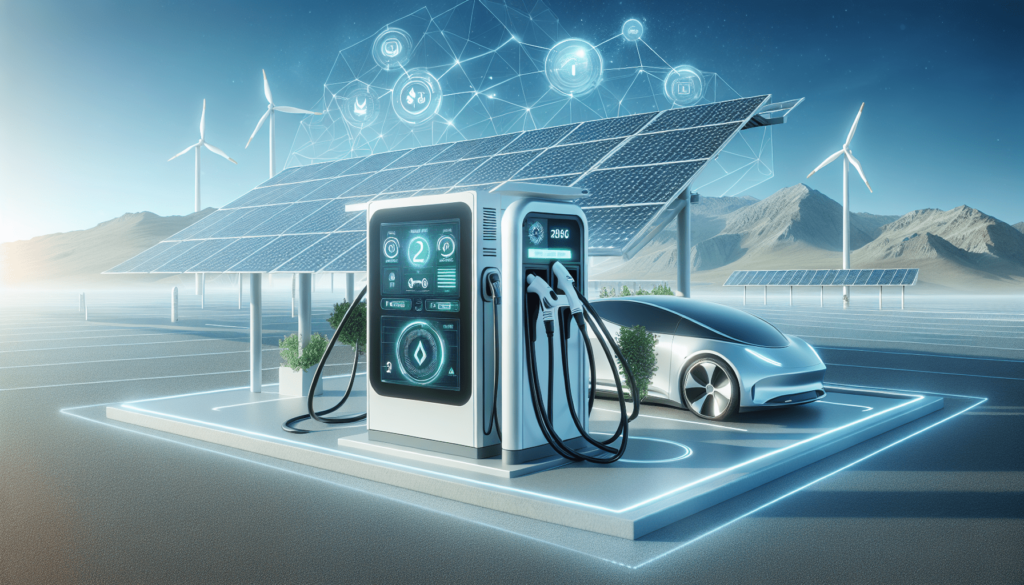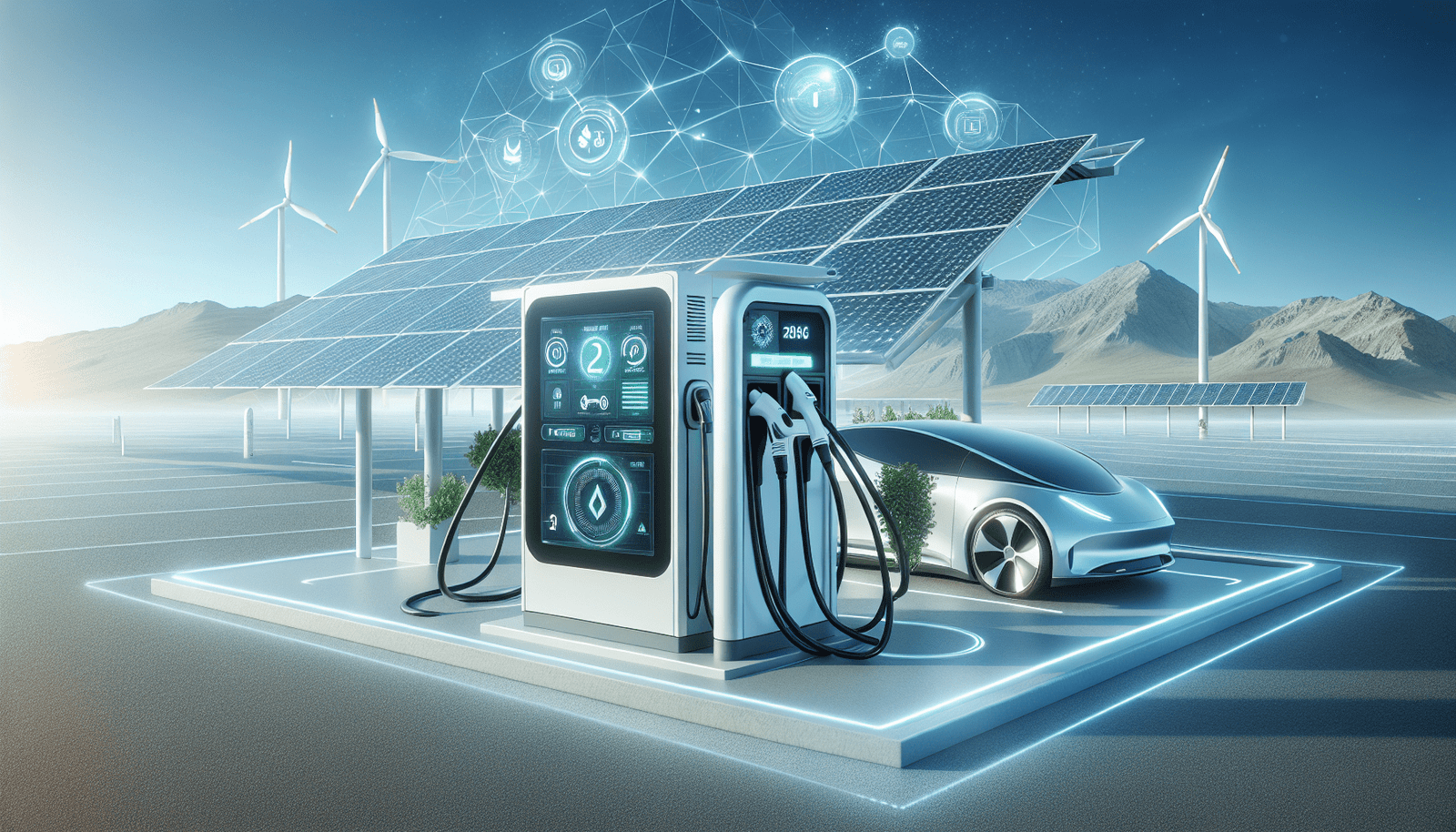So you’ve made the exciting decision to join the growing number of environmentally conscious drivers and switch to an electric vehicle. But have you ever wondered how the emissions from these eco-friendly cars are actually measured and regulated? In this article, we will explore the fascinating world of electric vehicle emissions, uncovering the methods used to measure them and the regulations put in place to ensure these vehicles are as clean as they claim to be. Get ready to discover the science behind this green revolution!

Introduction
Welcome to the world of electric vehicles, where eco-friendly transportation is at your fingertips. As we strive to reduce carbon emissions and fight climate change, electric vehicles (EVs) have emerged as a promising solution. But you may be wondering, how are the emissions from these vehicles measured and regulated? In this comprehensive article, we will explore the ins and outs of electric vehicle emissions, discussing the different methods of measurement, the regulations in place, and the challenges that arise. So fasten your seatbelt and let’s dive into the world of EV emissions!
Emissions from Electric Vehicles
No Tailpipe Emissions
One of the greatest advantages of electric vehicles is their lack of tailpipe emissions. Unlike traditional internal combustion engine vehicles, EVs run on electric motors powered by stored electricity in high-capacity batteries. As a result, they do not emit any harmful pollutants such as carbon dioxide (CO2), nitrogen oxides (NOx), or particulate matter (PM) from their tailpipes. This makes EVs a cleaner alternative to conventional vehicles and a key contributor to reducing air pollution in urban areas.
Life Cycle Assessment
While EVs may not produce tailpipe emissions, it is important to assess their environmental impact throughout their entire life cycle. This is where the concept of a Life Cycle Assessment (LCA) comes into play. LCA evaluates the environmental impact of a product, from the extraction of raw materials to its disposal. When it comes to EVs, LCA takes into account factors such as the production of batteries, electricity generation for charging, and eventual recycling. By considering the entire life cycle, LCA provides a more holistic view of the emissions associated with electric vehicles.
Regulation and Standardization
National Regulations
To ensure that electric vehicles adhere to emission standards and promote a cleaner environment, many countries have implemented their own national regulations. These regulations set limits on the amount of emissions that can be released by vehicles, including EVs. By establishing these standards, governments can hold manufacturers accountable for producing vehicles that meet specified emission limits. It is worth noting that these regulations can vary from country to country, depending on the local environmental priorities and infrastructure.
International Standards
In addition to national regulations, international standards also play a crucial role in regulating electric vehicle emissions. Organizations such as the International Organization for Standardization (ISO) and the United Nations Economic Commission for Europe (UNECE) develop and promote standards that govern the testing and measurement of emissions from vehicles, including EVs. These international standards ensure consistency and harmonization in emission measurements, enabling accurate comparisons between different vehicles and facilitating global efforts in reducing emissions.
Measuring Electric Vehicle Emissions
Direct Method – Tailpipe Emissions
Measuring electric vehicle emissions can be done using both direct and indirect methods. The direct method involves measuring the emissions released from the tailpipe of the vehicle during its operation. This method is commonly used for conventional vehicles and can also be applied to plug-in hybrid electric vehicles (PHEVs) that have a combustion engine. However, as previously mentioned, pure electric vehicles produce zero tailpipe emissions, making this method irrelevant in their case.
Indirect Method – Life Cycle Assessment
For electric vehicles, the indirect method of measuring emissions is employed, which relies on Life Cycle Assessment (LCA). LCA considers the emissions associated with the production, use, and disposal of the vehicle and its components. The assessment takes into account factors such as the materials used in battery production, energy sources used for charging, and the end-of-life management of the vehicle. Through comprehensive analysis, LCA provides a more accurate representation of the environmental impact of electric vehicles.

Tailpipe Emissions
Measuring CO2 Emissions
When it comes to evaluating emissions, carbon dioxide (CO2) is a key focus due to its significant contribution to climate change. Measuring CO2 emissions from electric vehicles is a process that involves calculating the carbon footprint associated with the electricity used for charging the vehicle. This involves determining the electricity source, whether it is from renewable energy, fossil fuels, or a mix of both. The CO2 emissions are then calculated based on the carbon intensity of the electricity source, providing insights into the true greenhouse gas emissions associated with an electric vehicle.
Measuring Other Pollutants
While electric vehicles do not emit pollutants from their tailpipes, it is important to consider other potential sources of emissions. For example, the production and disposal of batteries can have environmental impacts. Additionally, the electricity used for charging the vehicles may also come from power plants that emit pollutants. To address these concerns, comprehensive life cycle assessments account for the emissions associated with battery manufacturing, electricity generation, and recycling, among other factors.
Life Cycle Assessment
Scope of Assessment
Life Cycle Assessment (LCA) for electric vehicles encompasses multiple stages in the life cycle of the vehicle, including the raw material extraction, vehicle manufacturing, operation, and end-of-life treatment. Each stage contributes to the overall environmental impact, and LCA aims to quantify and analyze these impacts. By considering the entire life cycle, LCA provides a comprehensive assessment that includes not only tailpipe emissions but also the indirect emissions associated with the production and use of the vehicle.
Measuring Energy Consumption
In addition to emissions, another significant aspect of assessing electric vehicle impact is measuring energy consumption. This includes evaluating the energy required for battery production, charging, and even recycling. By measuring energy consumption, researchers and policymakers can identify opportunities to improve the energy efficiency of electric vehicles and reduce the environmental impact associated with their life cycle.
Challenges in Measuring Electric Vehicle Emissions
Variability in Real-World Driving
One of the challenges faced in measuring electric vehicle emissions lies in the variability of real-world driving conditions. Factors such as driving behaviors, traffic congestion, and road conditions can have an impact on the actual emissions produced by an electric vehicle. To address this challenge, researchers and testing centers work on developing and implementing standardized testing procedures that better reflect real-world driving scenarios, ensuring accurate emission measurements.
Accounting for Electricity Source
Determining the source of electricity used to charge electric vehicles is another challenge in measuring their emissions. The carbon intensity of electricity can vary depending on the region and the energy mix. For instance, charging an EV in an area with a high proportion of renewable energy sources results in lower emissions compared to areas heavily reliant on fossil fuels. To account for this variability, LCA calculations consider the regional carbon intensity of electricity to provide a more accurate assessment of emissions.
Role of Government Agencies and Testing Centers
Environmental Protection Agency (EPA)
Government agencies play a vital role in regulating and monitoring electric vehicle emissions. In the United States, the Environmental Protection Agency (EPA) sets emission standards and conducts testing to ensure compliance. The EPA’s regulations and testing procedures help establish a level playing field for manufacturers and provide consumers with reliable information about the environmental impact of vehicles.
California Air Resources Board (CARB)
In California, which has been a leader in advancing clean technologies, the California Air Resources Board (CARB) takes the lead in setting emissions standards for vehicles, including electric vehicles. CARB has implemented regulations to reduce greenhouse gas emissions, promote the adoption of zero-emission vehicles, and encourage the development of clean energy.
European Vehicle Emissions Standards
In Europe, the European Union (EU) has implemented stringent vehicle emissions standards to limit the impact of vehicles on air quality and climate change. These standards, collectively known as the Euro emissions standards, set boundaries for emissions of pollutants such as CO2, nitrogen oxides (NOx), and particulate matter (PM). They apply to all vehicles, including electric vehicles, ensuring that even clean vehicles meet certain environmental criteria.
Emission Testing Centers
To measure emissions accurately and ensure compliance with regulations, emission testing centers play a crucial role. These centers conduct various tests, ranging from emissions testing during the vehicle’s operation to laboratory testing of components. They use sophisticated equipment and standardized procedures to collect data and provide credible and reliable information about the emissions produced by electric vehicles. The involvement of these testing centers helps maintain transparency and trust in the measurement and regulation of EV emissions.
Improving Emission Measurement Techniques
New Testing Procedures
To overcome the challenges and enhance the accuracy of emission measurement for electric vehicles, researchers and authorities continually develop and refine testing procedures. These procedures aim to better simulate real-world driving conditions, accounting for factors that may affect emissions, such as air temperature, road grade, and driving patterns. By improving the testing protocols, authorities can obtain more precise and representative emission data, promoting fairness and accountability in the electric vehicle industry.
Advancements in Technology
Technological advancements play a vital role in improving emission measurement techniques for electric vehicles. Innovations such as remote sensing devices, which can measure emissions in real-time during on-road operation, provide valuable information about the environmental performance of vehicles. Additionally, advancements in data analytics and modeling allow researchers to analyze large datasets and predict emissions more accurately. These technological breakthroughs pave the way for more effective and efficient monitoring and regulation of electric vehicle emissions.
Conclusion
In conclusion, the measurement and regulation of electric vehicle emissions involve a comprehensive assessment of their environmental impact throughout their entire life cycle. While the absence of tailpipe emissions in electric vehicles is a significant advantage, it is crucial to consider indirect emissions, such as those associated with electricity generation and battery production. By utilizing methods such as Life Cycle Assessment and implementing national and international regulations, governments and testing centers ensure accurate measurement and regulation of electric vehicle emissions. The continuous improvement of testing procedures and technological advancements further enhance our understanding and ability to mitigate the environmental impact of electric vehicles. With concerted efforts and advancements in emission measurement techniques, electric vehicles continue to contribute to a cleaner and greener future. So, next time you hop into your electric vehicle, rest assured that you are making a positive impact on the environment. Happy and emissions-free driving!

